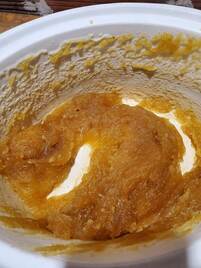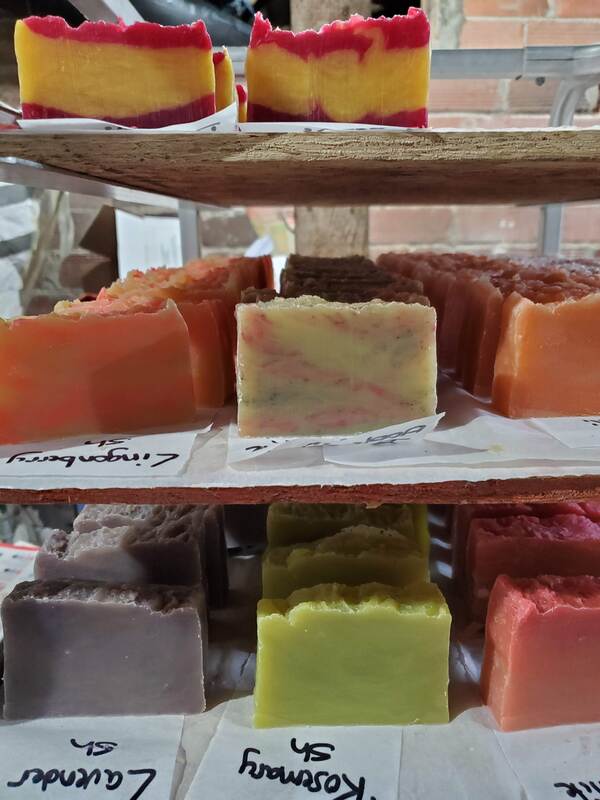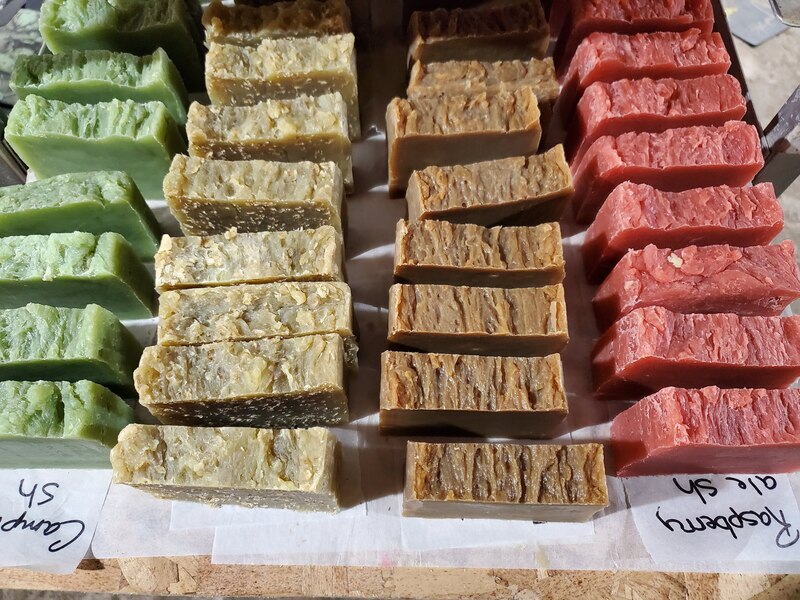
Making soap can seem mysterious, dangerous and difficult until you actually learn how. There are several different methods and all can make great soap, but the method I like is called hot process. One of the reasons I like it best is because I think it is the most like the way our ancestors would have made it; mixing the ingredients in a pot on the stove until it was cooked and then pouring it into a mold.
The most difficult part of making soap is measuring. When people first began to make soap they used trial and error and when it worked, passed those recipes down to others. Now I use an online tool called a soap calculator. I can enter my ingredients and the size of the recipe, then adjust amounts until I get the qualities I want (I like hard, sudsy bars of soap), and the calculator tells me how much lye I need to use to get the chemical reaction that makes soap. That is so much easier than running rain water through ashes, straining it and then floating an egg to see if it is strong enough! Yes, that is how lye used to be made. Once I have perfected my recipe I carefully measure all the ingredients on my kitchen scale. If I do it correctly, the soap will turn out just right every time!
Once I have measured the oils I place them in a crockpot so the hard oils (lard or coconut) can melt. Every oil has different properties. Lard makes a harder, whiter bar. Coconut is cleansing and sudsy. Castor is moisturizing and conditioning. A good soap calculator will tell you the qualities of each oil. While I am waiting for the oils to melt, I mix the lye with water. It gets hot, so I am careful not to get burned. Once the oils are melted I can add the lye/water mixture, then let them cook until it gets thick like mashed potatoes. This is a picture of finished soap in the pot. I then put it in wooden molds to dry.
The most difficult part of making soap is measuring. When people first began to make soap they used trial and error and when it worked, passed those recipes down to others. Now I use an online tool called a soap calculator. I can enter my ingredients and the size of the recipe, then adjust amounts until I get the qualities I want (I like hard, sudsy bars of soap), and the calculator tells me how much lye I need to use to get the chemical reaction that makes soap. That is so much easier than running rain water through ashes, straining it and then floating an egg to see if it is strong enough! Yes, that is how lye used to be made. Once I have perfected my recipe I carefully measure all the ingredients on my kitchen scale. If I do it correctly, the soap will turn out just right every time!
Once I have measured the oils I place them in a crockpot so the hard oils (lard or coconut) can melt. Every oil has different properties. Lard makes a harder, whiter bar. Coconut is cleansing and sudsy. Castor is moisturizing and conditioning. A good soap calculator will tell you the qualities of each oil. While I am waiting for the oils to melt, I mix the lye with water. It gets hot, so I am careful not to get burned. Once the oils are melted I can add the lye/water mixture, then let them cook until it gets thick like mashed potatoes. This is a picture of finished soap in the pot. I then put it in wooden molds to dry.

Once in the molds, they must dry at least 24 hours before I unmold and cut the bars. Each mold makes 13 5 oz bars. After cutting, they need to wait several more weeks to dry so the bars will be harder and last longer. After they are dry enough, they are labeled and put into boxes to take to shows and events to sell.

Clean up is easy, I just put all the dirty dishes in the sink and fill with hot water. After soaking for half an hour they nearly clean themselves! Because the soap has been cooked there is no lye left to harm my skin.
I hope you enjoyed learning a little about how I make soap; if you are interested in a hands on class, let me know!
I hope you enjoyed learning a little about how I make soap; if you are interested in a hands on class, let me know!



 RSS Feed
RSS Feed